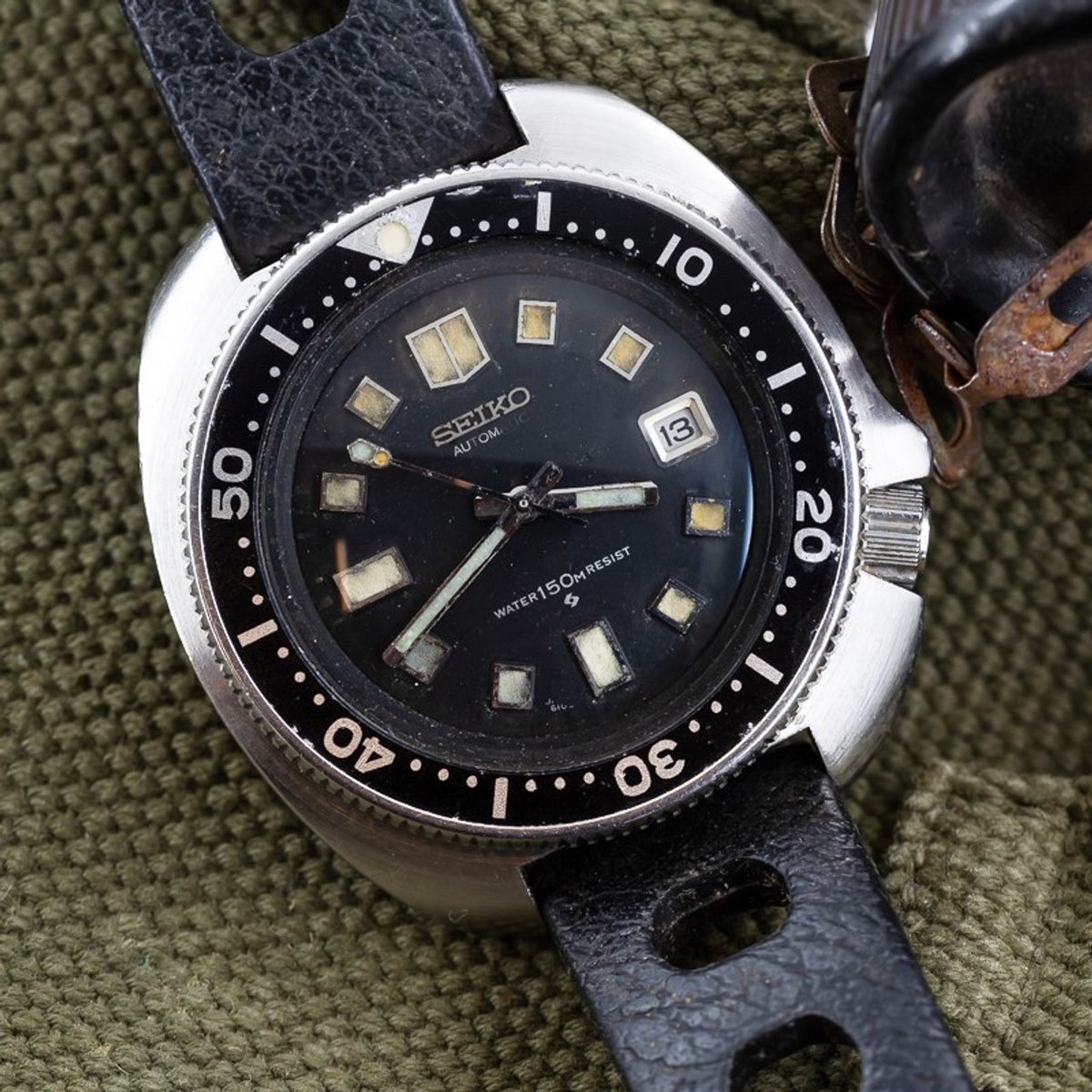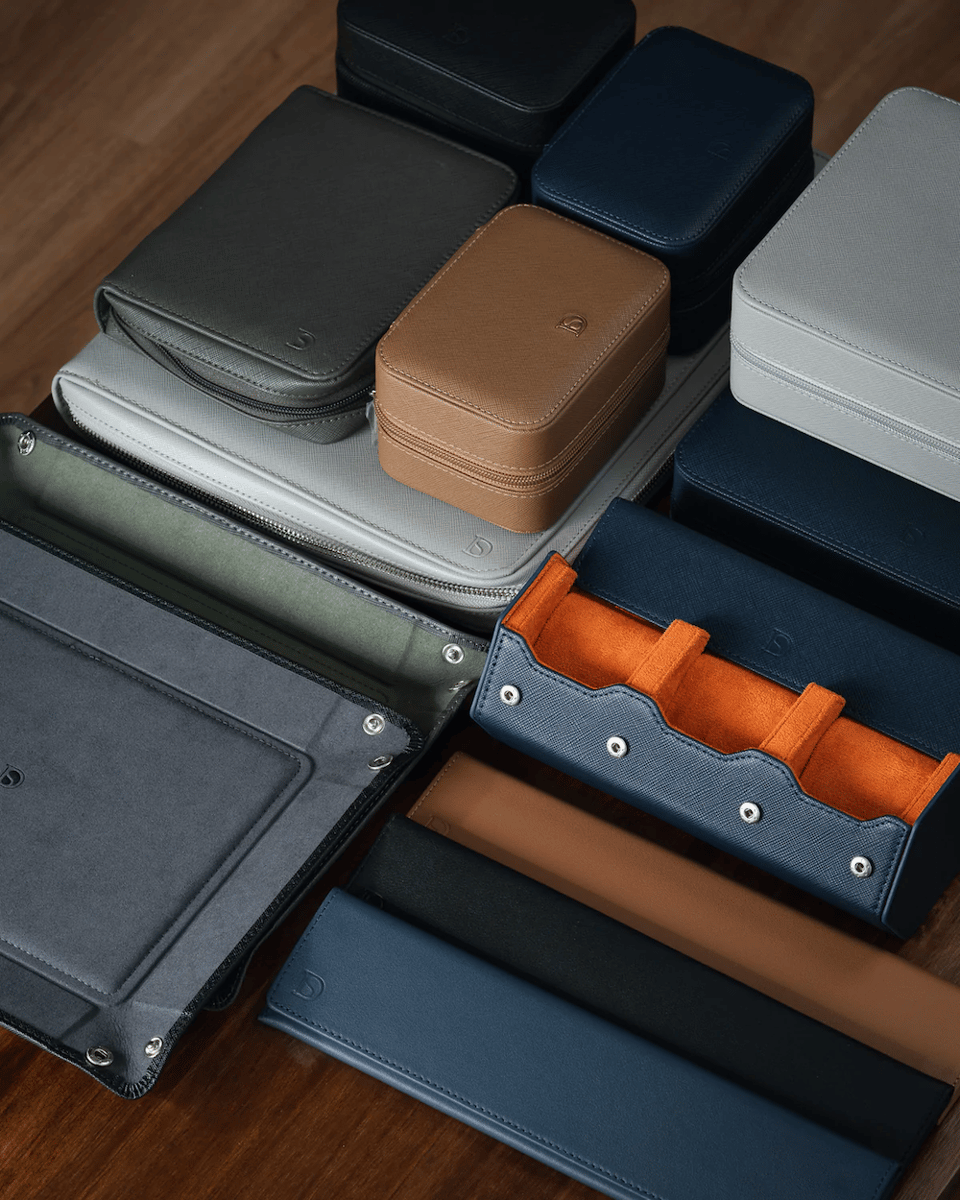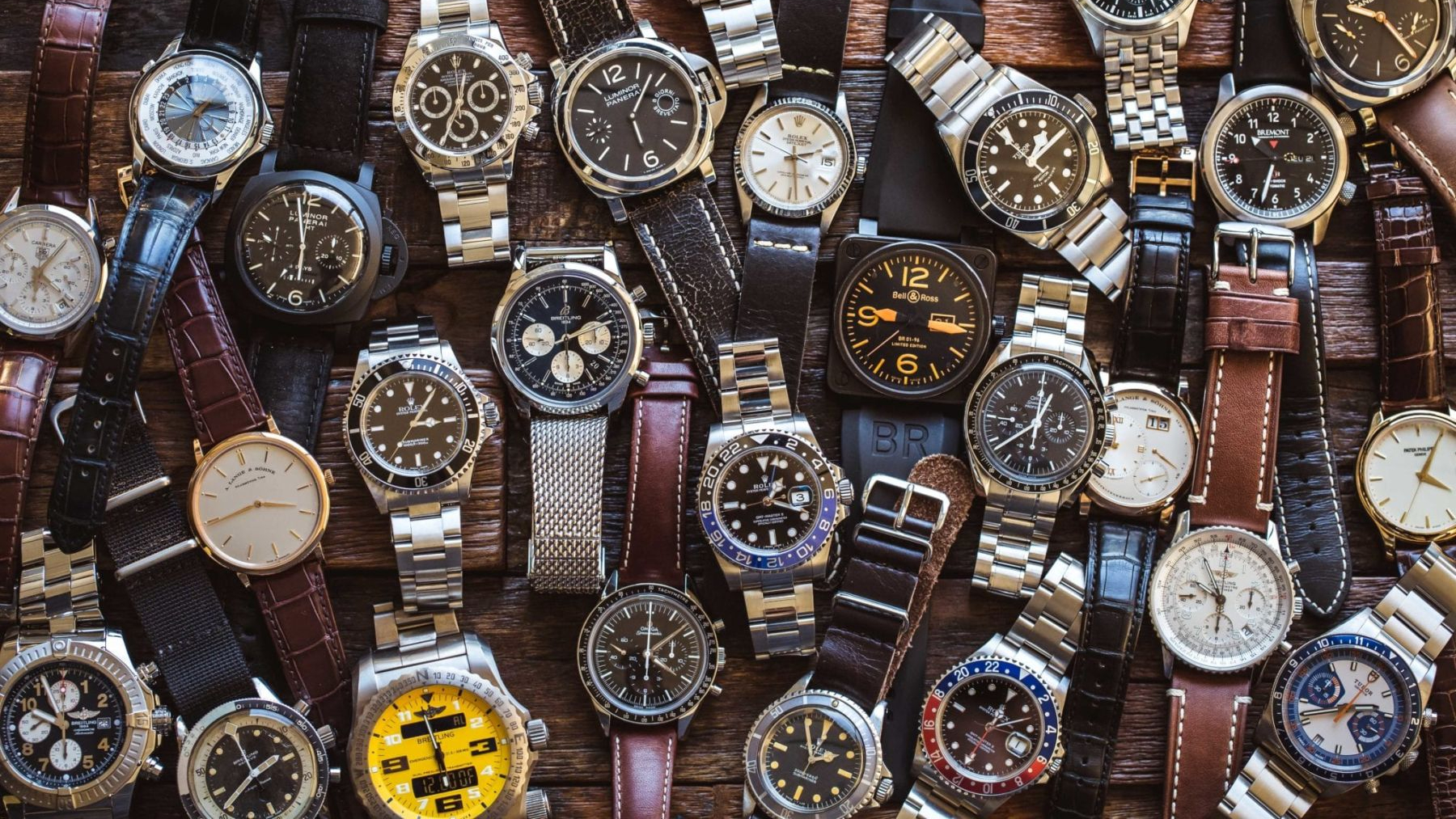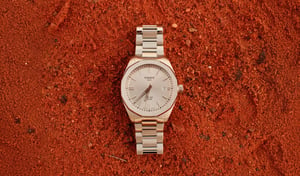There are as many reasons to start a watch collection as there are watch collectors in the world, but once the bug has bitten you, the path forward can feel a little intimidating. Of course, there’s no right or wrong way to chase your enthusiasm for watches, but if you’re looking for ideas on how to start a watch collection there are definitely a few tips that can make the journey all the more exciting and interesting.
For many, watch collecting can feel like a passion reserved for the very wealthy. With articles online putting $10,000 timepieces into “budget” categories and most of the headlines about watches in traditional media screaming about seven or eight-figure auction results, it’s not unreasonable to assume you need a house deposit to get some skin in the game.
Sure, you can (pretty much) spend as much money as you like on a timepiece, but that doesn’t mean some of the rarest and most interesting watches aren’t also completely affordable for the average Aussie. In fact, some of the most passionate and open-armed watch collectors I’ve ever met don’t even focus on the newest and most expensive watches, instead following their nose to whatever corners of the horological universe their interest takes them.

RELATED: How To Spot A Fake Rolex: A Comprehensive Guide On Sidestepping The Fugazis
For this guide, I’ll be relying heavily on my own experience of collecting watches, but I’ll also draw from a few lessons I learned along the way from seeing how other collectors have done it to offer a couple of basic ideas that can apply to anyone starting their watch collection.
Great Watches Aren’t Expensive
I started collecting watches when I was going through uni, a time when my friends and I might have had a bit of beer money to spend at the happy hour bar, but not much beyond that. Unaware of the world of vintage watches and the potential bargains to be found, most of the first watches I bought were new pieces from Seiko and Casio – a classic place to start for many.
It wasn’t till I started to engage with the wider watch-collecting world on Instagram that I learned more about the possibilities that were out there. Pre-owned watches weren’t just considered a cheaper alternative to the watches you could buy from a shop, but objects of historical intrigue boasting entire bodies of scholarship and communities of enthusiasts formed around them.
It’s worth saying at this point that having an idea of why you’re interested in watches is important. If you’re looking for one watch to be your everyday watch that can impress your colleagues or friends, there’s absolutely nothing wrong with that and buying a Rolex Submariner or Patek Philippe will probably satisfy your craving. Unfortunately, there isn’t a particularly affordable way to do it.
If you’re living in Australia and are interested in the watches themselves (even if you’re also interested in the social signalling they offer) then I’d start with buying Japanese vintage watches. While in many parts of Europe you can find great affordable vintage Swiss watches (where Japanese watches can often be more expensive), Australia’s proximity to the land of the rising sun means there are plenty of fantastic Seiko and Citizen watches out there for a couple of hundred dollars.
While your immediate reaction to Seiko and its neighbours might not be a positive one, there are three great reasons to buy a vintage watch from Japan. Firstly, they made literally thousands of different models, meaning you’re unlikely to see the same one on another wrist and you’ll always be finding models you’ve never seen before.
Secondly, they’re generally very well made so you’re unlikely to buy a complete dud that breaks the minute you strap it to your wrist, also giving you the satisfaction that what you’re buying is good value. Lastly, because you’re buying vintage watches that are comparatively affordable, you can also try dozens of different styles as you discover what it is you like (as well as generally getting all your money back if you want to sell them).

Dig Deeper
The more watches you see, the more you’ll start to develop your own taste. The more you research a specific model and all of its variations, the more you dig into the history of a movement or a manufacturer, the better you’ll understand what it is that gets your blood pumping.
Not only will learning about watches scratch an intellectual itch, but you’ll also learn why a mechanical watch commands a higher price than a quartz watch, the purpose of a dress watch compared to a dive watch and why sapphire crystal and strong power reserve are desirable features. Essentially, what it is that really makes a nice watch.
There’s an entire field of study when it comes to the Omega Speedmaster and the Audemars Piguet Royal Oak, with seemingly countless variations and peculiarities. You might fall in love with vintage Rolex with a specific focus on the Rolex GMT Master, or you might trip into a rabbit hole of mil-spec timepieces that were made for the British Ministry of Defence during the Second World War.
When any new watch collectors start collecting watches, the avenues of pursuit are endless, from complicated calendar watches and robust dive watches to elegant dress watches that arrive on a fine leather strap. The perfect watch for you might not be an expensive watch or a gold watch, but you won’t know a good watch unless you search for it.
The other great thing that comes from learning about watches is the community of watch enthusiasts that are out there, who will happily share information and advice. There’s nothing quite like a passion shared and you’ll also quickly learn that the eyes of everyone in your life will glaze over as soon as you start talking about watches, which is why it’s key to find a couple of folks to chat with who do.
Great resources include Boss Hunting (obviously), Hodinkee, A Collected Man, Watches By SJX, Time+Tide Watches and many more. Instagram is a fantastic place to learn, just like the YouTube channels of the watch world. The more you know, the more fun you’ll have.

Make Mistakes
There’s nothing quite like a new watch arriving on your doorstep, only for you to open the box and be left completely and utterly cold by it. Hopefully, it isn’t your first watch. If you’ve spent some time thinking about the purchase beforehand, very few watches should have this effect, but it’s also important to remember that making mistakes is all a part of the journey.
Sometimes, no matter how much time you’ve spent reading about a watch, speaking with other watch collector friends about it and studying the spec sheet, you’ll put a watch on your wrist for the first time and hate it. In a way, it’s a good thing when this happens as you’ve learned something new about what it is that really interests you, which can inform your next watch-purchasing decision.
I’d advise you not to give up on a watch you don’t love on sight straight away. Wear it for a couple of weeks, try it out with different outfits and in different situations – give it a proper chance. At some point, however, you’ll know you’re trying to push a round peg into a square hole and all that’s left to do is rip the bandaid off and sell it.

Don’t Forget To Sell
While most of the thrill in watch collecting is had in buying watches, selling watches is also a part of the game. Unless you’re a centimillionaire (I once heard of a collector who hasn’t sold a watch in fifty years, but only because they never needed to), eventually you’ll reach a point where you need to free up some watch collecting capital to fund the next purchase.
I’ve never enjoyed selling a watch, but it does present you with an opportunity to consider what it is you’ve got in your collection and where you want to go from there. It’s a chance to refine your collection, renew your focus and free up some watch budget.
Facebook executive and passionate watch collector Matt Jacobson has a well-known “one in, one out,” policy when it comes to his collecting of anything, but especially with his timepieces. If he’s looking to buy something new, it needs to replace an existing piece within his collection and must be better than what he’s already got.
It’s rare to have such discipline around the acquisition of objects in our lives, but even if you don’t take the idea as strictly as Jacobson, it’s an insightful strategy to approach collection building. After all, it’s a quick path down the wrong road if you let the things you own start to own you.
Selling is an unfortunate reality of watch collecting, but if you’re doing it for the right reasons and have a truly special piece incoming to take its place, that’s about as good as you can get. Regretting the sale of something afterwards is another harsh likelihood, but the occasional pang of longing is a reminder of the incredible watches you’ve owned so far.
One element of regret it’s best to avoid entirely is the financial side of watch collecting, especially if you sold a watch that is now worth significantly more money. Remember, the market you sold it in was a different one and in the eternal words of Warren Buffet, “time in the market beats market timing every time.”

Chase The Rush, Not The Hype
The most passionate watch enthusiast is likely the one who only buys what they want and is completely uninterested in chasing the hype around certain watches. Generally speaking, hyped-up watches will be hard to buy from a boutique, trade above their original retail price and are everywhere you look.
If you really know what it is that you love, the chances of you only being interested in hype watches are extremely low. In fact, a good litmus test for someone who doesn’t really like watches all that much is if their “grail watch” was released within the last few years and trades at double or triple its RRP. Statistically, it’s unlikely they arrived at that opinion by themselves, with groupthink probably the driving force behind their desire.
As far as the most consistent advice I’ve heard when it comes to watch collecting, “buy what you love” takes first prize. Develop your taste by trying lots of different kinds of watches (a practice made easiest with more inexpensive watches), make mistakes and slowly learn your personal style and preference in timepieces.
Not only will this lead to a collection that truly reflects your personality, but it’ll also ensure a more fulfilling hobby in watch collecting, which at the end of the day is what we’re all here for.

Not Watches
Finally, the world of watches is wider than just watches. Buying different straps and bracelets for your watches can make them feel new again, as well as offer a tiny appreciation for the difficulty of a watchmaker’s job. Getting a spring bar out can sometimes prove challenging for even the most dextrous, reminding you just how incredibly patient and methodical the folks who build our watches are.
Another rabbit hole (and money pit) are the endless storage solutions for a watch collection, from the hand-crafted leather pouch to the palatial watch box. There are lots of reputable manufacturers of horological accessories that are worth your hard-earned money, and another avenue to research endlessly in the pursuit of the perfect collection.
















